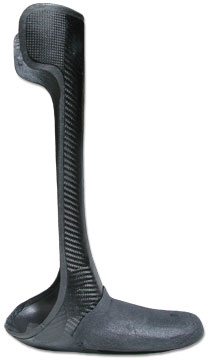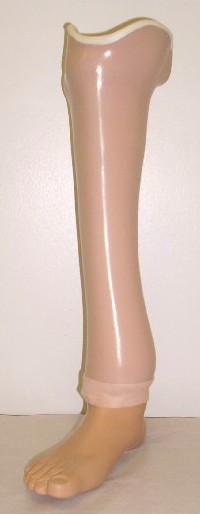Partial Foot Prosthesis
Partial Foot Amputations can includes Toe, Transmetatarsal, Lis Franc, Chopart, Pirogoff, Boyd and Symes.
When faced with the prospect of losing a part of one's foot, there are several challenges to face for the patient and the rehabilitation team. Preserving as much of the limb as possible is a primary consideration.
Advantages of the partial foot amputation includes allowing some weight-bearing through the plantar surfaces of the foot and providing a better mechanical advantage when walking. A partial foot prosthesis helps distribute the weight-bearing forces comfortably on the remaining foot.
Therefore, the higher the level of amputation the higher the prosthesis needs to be on the foot, ankle or leg. Prosthetic options include no prosthesis; rigid footplate with arch support combined with a rocker bottom shoe sole; custom-molded foot orthosis/ prosthesis; custom-molded shoes; modified ankle-foot orthosis with a toe filler; foot prosthesis-a custom-molded socket attached to a semi-rigid foot plate with a toe filler.
Due to the complexity of the human foot, different levels of surgery through the foot determines the type of amputations performed.
The toe can be removed.
The single metatarsal ray.
The transmetatarsal level includes all the toes and metatarsal rays.
Lis Franc amputation is at the tarso-metatarsal junction.
Chopart amputation is a midtarsal, talo-navicular, calcaneo-cuboid level with only the talus and calcaneus bones remaining.
Pirogoff is a vertical calcaneal amputation .
Boyd is a horizontal calcaneal amputation - all the tarsals are removed except the calcaneus/talus.
Symes is an ankle disarticulation with the heel pad from the foot left to allow some weight bearing.
Partial Foot Prostheses replacing all toes
![]()
Cosmetic Silicone Partial Foot Prosthesis 
Chopart,Transmetatarsal, Lis Franc prosthesis
Symes Prosthesis

